Sabbatical Journey
After a plane journey from Tanzania to Doha, Qatar, an overnight layover in the Doha airport (beautiful and very fancy, though not enough sleep), and then another flight into Istanbul, we began the Turkish part of our adventure! We arrived into unseasonable rain and cooler temperatures, which set us up to sort our laundry and drop it at a lovely local laundromat before setting out for the sights, smells and stories of Istanbul.
Though Istanbul is one of the biggest cities in the world (the metro area clocks in between 25 and 30 million residents), it feels quite walkable, at least for the historical and central areas. Our first stop was a traditional bakery that has many, many treats, including gluten-free baklava -- a total win for Miriam. Our few Turkish treats and a bolster of coffee was our lunch, and then off to the Hagia Sophia. This was a Byzantine (orthodox) Cathedral, completed and dedicated in 537 -- the biggest of it's day, and fourth biggest to date -- then a mosque, then a museum, and now a mosque again. The architecture, ornamentation, people watching, and history make this place one of the most interesting sights we've seen. In the same complex as the Hagia Sophia, we also visited the Blue Mosque, commissioned by Ottoman Sultan Ahmed I, completed in 1616. Both of these sacred sites leveraged the best architects, artisans and materials from their respective empires to build just breathtaking buildings.
As a side note, we've been reading local authors, books set in our destinations, and books about the countries we've visited before and during our visits. The book "Crescent and Star" by Stephen Kinzer was particularly helpful in understanding modern Turkish history and helping us place the more recent history of these and other monuments within the context of what has happened here since the dissolution of the Ottoman Empire after WWI.
We also visited the magnificent and sprawling Ottoman Topkapi Palace, home of Ottoman sultans from shortly after the conquest of Constantinople in 1453 until the 1860s. This palace gave us insight into both the Ottoman art and architecture and cultural norms such as Turkish baths, public meeting spaces, and marriage. In the same
Enchanting Istanbul
June 06, 2023
|
Istanbul, Turkey
After a plane journey from Tanzania to Doha, Qatar, an overnight layover in the Doha airport (beautiful and very fancy, though not enough sleep), and then another flight into Istanbul, we began the Turkish part of our adventure! We arrived into unseasonable rain and cooler temperatures, which set us up to sort our laundry and drop it at a lovely local laundromat before setting out for the sights, smells and stories of Istanbul.
Though Istanbul is one of the biggest cities in the world (the metro area clocks in between 25 and 30 million residents), it feels quite walkable, at least for the historical and central areas. Our first stop was a traditional bakery that has many, many treats, including gluten-free baklava -- a total win for Miriam. Our few Turkish treats and a bolster of coffee was our lunch, and then off to the Hagia Sophia. This was a Byzantine (orthodox) Cathedral, completed and dedicated in 537 -- the biggest of it's day, and fourth biggest to date -- then a mosque, then a museum, and now a mosque again. The architecture, ornamentation, people watching, and history make this place one of the most interesting sights we've seen. In the same complex as the Hagia Sophia, we also visited the Blue Mosque, commissioned by Ottoman Sultan Ahmed I, completed in 1616. Both of these sacred sites leveraged the best architects, artisans and materials from their respective empires to build just breathtaking buildings.
As a side note, we've been reading local authors, books set in our destinations, and books about the countries we've visited before and during our visits. The book "Crescent and Star" by Stephen Kinzer was particularly helpful in understanding modern Turkish history and helping us place the more recent history of these and other monuments within the context of what has happened here since the dissolution of the Ottoman Empire after WWI.
We also visited the magnificent and sprawling Ottoman Topkapi Palace, home of Ottoman sultans from shortly after the conquest of Constantinople in 1453 until the 1860s. This palace gave us insight into both the Ottoman art and architecture and cultural norms such as Turkish baths, public meeting spaces, and marriage. In the same
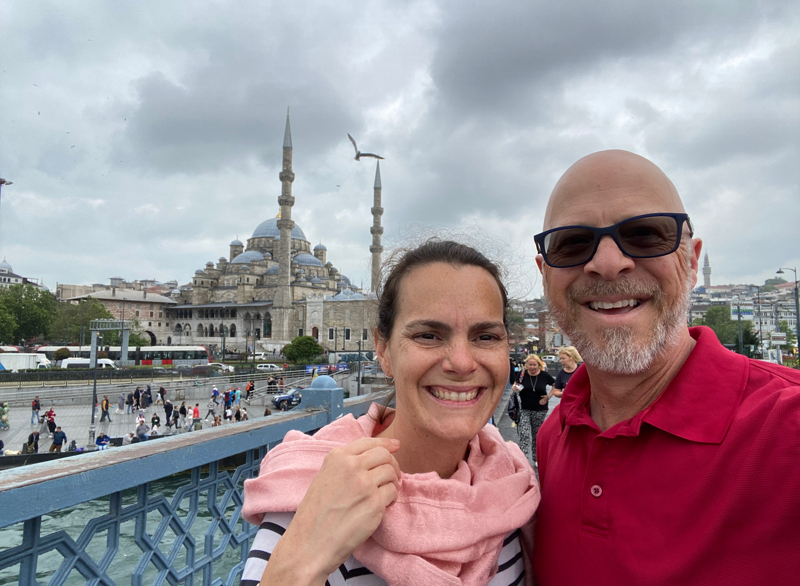
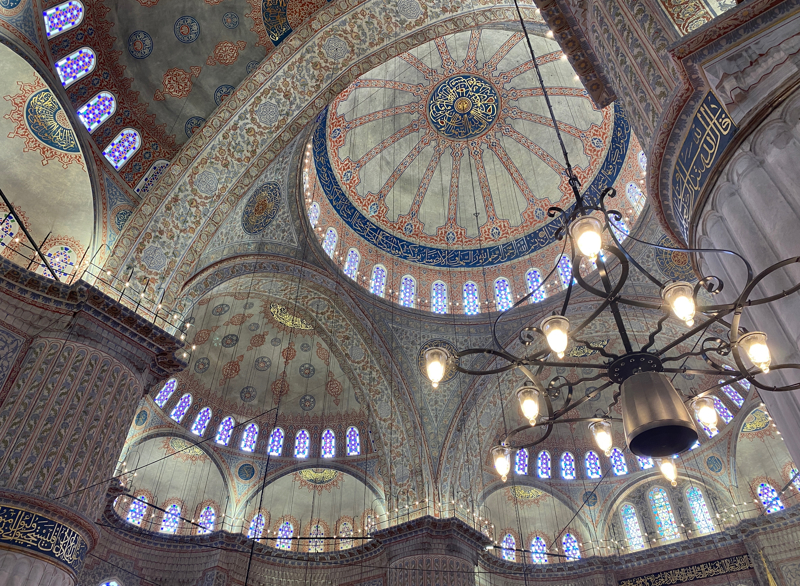


complex, we also visited the the Hagia Irene -- the first Christian cathedral in the area, commissioned by Constantine after conversion to Christianity, though burnt in the Nika rebellion and then rebuilt by Justinian. The structure we saw, dating from 548, was used as a church and then later as an Ottoman arsenal and now as museum and concert venue.
Nearby, we visited the Basilica Cistern, an underground water storage "tank" built by Emperor Justinian to hold drinking water for the growing city of Constantinople. Despite being surrounded by (sea) water, there is no fresh water in Istanbul and then, like now, it was a huge metropolis. The cistern was fed by aqueducts, rain water and ground water and can hold 2.8 million cubic feet of water! Now it has been restored, holds only a fraction of the water, and is also a museum of sorts for modern art.



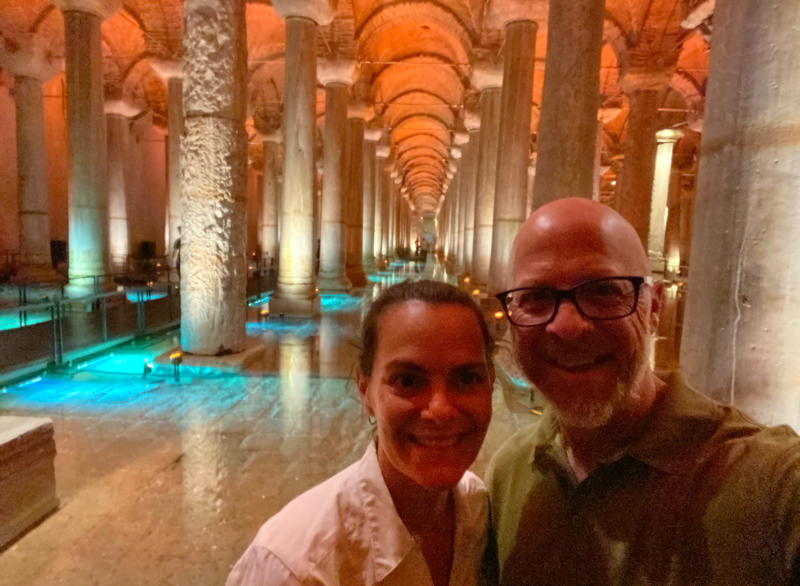
To cap off a wonderful two days of logging 10s of thousands of steps, many hills, much history, and a few snacks along the way, we had a boat ride in the Bosphorus Strait at sunset to really thread the needle, literally and figuratively, between Europe and Asia.


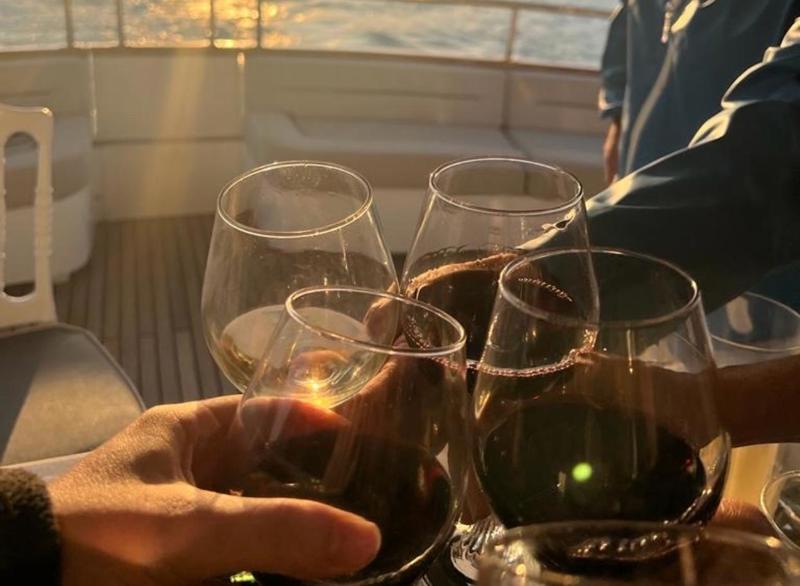
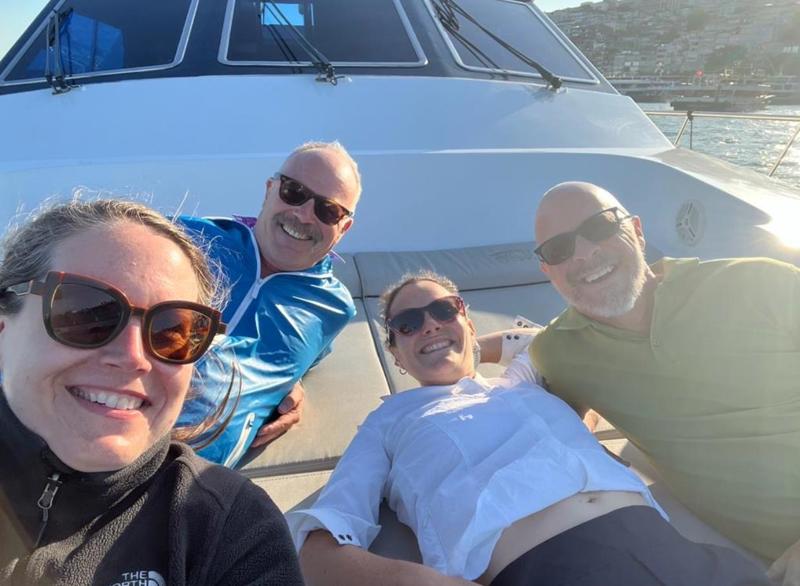
1.
Foreword
2.
The Itinerary
3.
Packing
4.
Cairo - Part 1
5.
Cairo - Part 2
6.
Sites of Ancient Egypt
7.
Egyptian Temples
8.
Valley of the Kings
9.
Egyptian Culture and Final Thoughts
10.
From Egypt to Morocco
11.
Northern Morocco
12.
Water and Climate Issues
13.
Cultural Capital of Morocco
14.
The Sahara Desert and Atlas Mountains
15.
The Road of 1000 Kasbahs and onto Marrakech
16.
A Wee Break in Londontown
17.
Malawi - First Impressions
18.
BEE World Pastor's Course
19.
Malawi’s National Parks
20.
Zomba Plateau
21.
Malawi, a Retrospective
22.
Plant with Purpose Tanzania
23.
Tanzania Safari
24.
Safari Animal Sighting List
25.
Enchanting Istanbul
26.
Classical Turkey & the Aegean Coast
27.
Cappadocia
28.
Lisbon
29.
Portugal's Heartland
30.
A Rocha Visit and the Southern Coast of Portugal
31.
Welcome
32.
Looking Back and Moving Forward
33.
...and home!
Share your travel adventures like this!
Create your own travel blog in one step
Share with friends and family to follow your journey
Easy set up, no technical knowledge needed and unlimited storage!